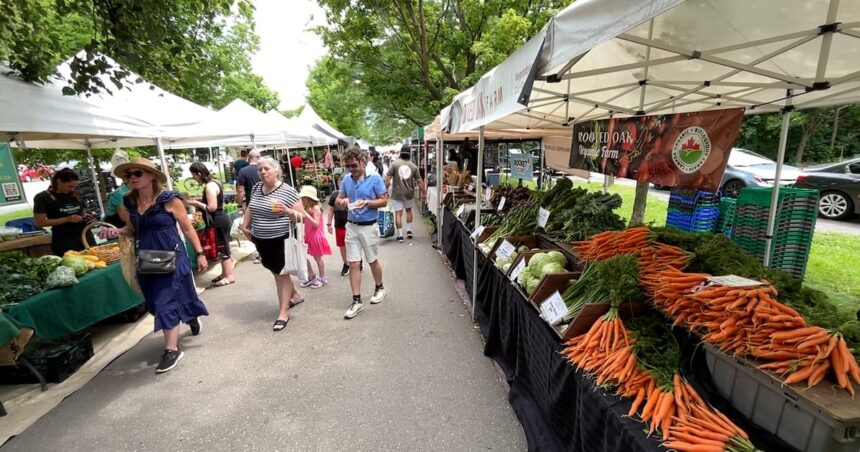The familiar weekend bustle at Ottawa’s farmers’ markets has taken on new significance this spring as residents increasingly turn to local producers amid relentless grocery price inflation. Early Saturday morning at Lansdowne Park, shoppers lined up at vendor stalls, canvas bags in hand, many driven there by what they describe as “shock” at conventional supermarket prices.
“I started coming here last year when I noticed my weekly grocery bill had jumped nearly $50 for essentially the same items,” said Rebecca Thornton, a Glebe resident examining fresh asparagus at a local farm stand. “The produce here isn’t just fresher—sometimes it’s actually more affordable.”
Her experience reflects the findings of Canada’s Food Price Report 2024, which projects food prices will rise between 2.5 and 4.5 percent this year. For the average Canadian family, this translates to an additional $700 in annual food expenditures compared to 2023, according to researchers from Dalhousie University and the University of Guelph.
The report identifies several factors driving these increases, including climate change impacts, rising transportation costs, and ongoing supply chain disruptions that began during the pandemic but continue to affect distribution networks throughout Canada’s food system.
At the Ottawa Farmers’ Market, vendor Paul Johnston has witnessed the shift firsthand. “Our customer base has grown by about 20 percent in the past year alone,” he said while arranging displays of early-season greens. “People are much more price-conscious now, asking questions about value and comparing what they’d pay elsewhere.”
Market officials report that vendor applications have increased by 15 percent for the 2024 season, with many new farms and producers seeking to connect directly with consumers. This direct-to-consumer model eliminates several links in the traditional supply chain where price markups typically occur.
“When you remove distributors, wholesalers, and retailers from the equation, both farmers and consumers can benefit,” explained Dr. Amanda Lewis, an agricultural economist at Carleton University who studies local food systems. “Farmers keep more of what consumers spend, while shoppers often get fresher products at competitive prices.”
The trend extends beyond produce. Ottawa’s artisanal food producers have also seen increased interest in their offerings as consumers reassess their shopping habits.
“People come for the vegetables but end up discovering our breads or preserves,” said Marie Duchamp, who operates a small-batch bakery stall. “They tell me they’re making more deliberate choices about where their food dollars go.”
The inflation-driven interest in local food represents a potential turning point for Ottawa’s agricultural sector, which has faced challenges from urban expansion and consolidation within the farming industry.
Local officials have taken notice. The City of Ottawa recently approved measures to expand farmers’ market access, including extended operating hours and additional locations throughout the city’s neighborhoods.
“Supporting local food infrastructure isn’t just about economics—it’s about food security and community resilience,” said Councillor Tim Williams, who championed the expansion initiative. “If global supply chains face further disruptions, local production becomes increasingly important.”
For market vendors, the increased interest provides both opportunity and challenges. Many smaller producers report struggling to meet growing demand while maintaining quality and avoiding the industrial farming practices they deliberately left behind.
As Ottawa residents navigate the new realities of food economics in 2024, the question remains: will this shift toward local purchasing represent a lasting change in consumer behavior, or simply a temporary response to inflationary pressures in the broader economy?

























